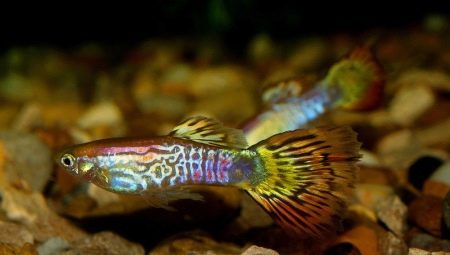It would seem that any aquarist knows what guppies look like - everyone knows these little fishes with a motley color. However, this acquaintance is often quite superficial, and therefore today we will talk about one of the most spectacular varieties of guppies - cobra. This aquarium resident is distinguished by a color that resembles snake skin in the form of a pronounced mosaic throughout the body.
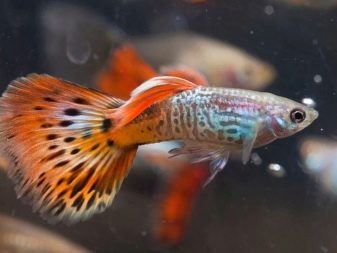
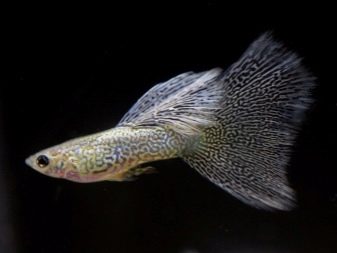
Description
The length of this fish is no different from the length of any other representatives of the guppy - males in adulthood grow up to 4 cm, and females a little more - 5-6 cm. These pets have a rather fluffy tail that resembles a skirt. The size of the tail can reach 50% of the total length of the fish. The dorsal fin is small, slightly pointed at the end.
A characteristic feature that distinguishes a guppy cobra from all other relatives is spots that are randomly located on the body and have a flickering metallic luster, making them look like snake skin.
This difference was the result of the work of breeders who for many years achieved the desired effect and carefully secured it.
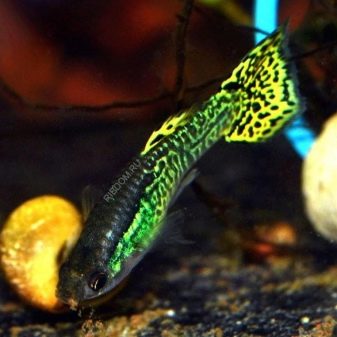

Colors
Guppies cobras are available in several colors. Consider the most popular varieties among aquarium fish lovers.
- Blue cobra - this fish can be safely attributed to the number of most favorite aquarium fish. In the natural environment, her relatives lived in small rivers flowing in South America. They had a beautiful red color, so biologists took them as the basis for breeding guppy cobra. Males have a dark blue body with a yellow-orange pattern.A similar pattern is also noticeable on the fins and in the tail of the fish, so that the pets look in a special decorative and effective way.
Males are usually smaller than females, and the latter, in turn, are faded, only the tail plumage has the same bright and saturated hue as males.

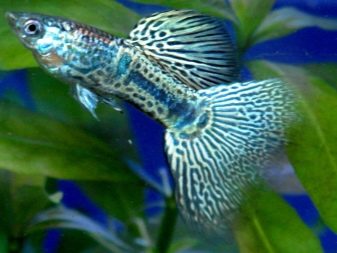
- Red cobra - In science, this fish is known as filigree. It is distinguished by bright red fins, the body is much paler, but also has a pinkish-red tint. Like other cobras, the filigree has an iridescent pattern that gives the scales a resemblance to snake skin.

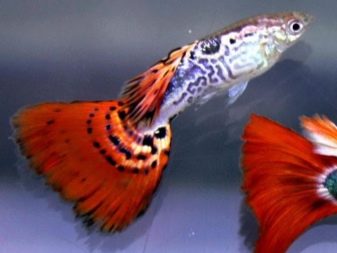
- Yellow gold cobra - This breed is of Asian origin, characterized by a yellowish tinge with a characteristic metallic bluish sheen. In this case, the "snake" is very clear. The caudal fin has a thin pattern, and the elements of the pattern on it are small and separated from each other. In general, the torso pattern is formed due to the process in the upper part, painted with a reddish color - it is directed from the apex to the dorsal fin.
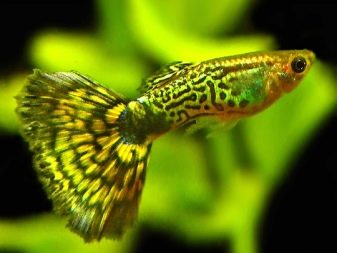
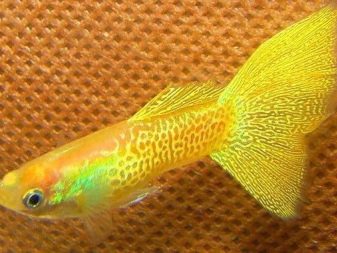
- Green cobra - as the name implies, the colors of this fish are dominated by green shades, the tail fin resembles a skirt with a slightly concave back, the bottom edge is slightly rounded. Roundish spots are arranged in random order and cover the entire body of the guppy, giving a pronounced resemblance to reptiles.

Content
Guppy cobra is a group of fish bred selectively. In nature, such fish do not occur, so aquarium pets need to be monitored more carefully. For the full development and reproduction of these fish it is necessary to provide the following conditions:
- water temperature - 20-27 degrees;
- stiffness - from 10 units;
- acidity - 6-8 pH;
At the same time, one should not give in to the error that this fish can live in any conditions - it is extremely demanding on the quality of water and aeration. Guppy cobras are highly sensitive to the presence of nitrites, nitrates, nitrogen and other organics. It is very important to keep the container clean - remove the remnants of half-eaten food and fish excrement.
In addition, you need to make weekly water changes, replacing it by about 25-30%.


Keep in mind that an aquarium with guppy cobras should be well lit, otherwise the fish will turn pale, become lethargic and begin to hurt. It is advisable to mark the tank in such a way that in the morning and evening, sunlight will fall into it.
It should be noted that otherwise the cobra guppy is rather unpretentious. These pets can comfortably exist both in a half-empty and in a very overgrown aquarium. They do not need a lot of space - for a couple of fishes, a 10-20 l tank is enough. They can feel great even in brackish water, and a long stay in unheated artificial reservoirs is allowed, but only if they are in a residential building.
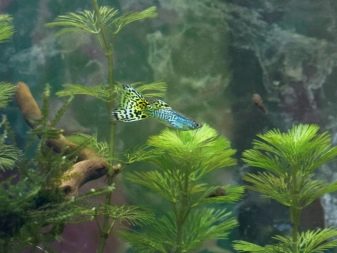
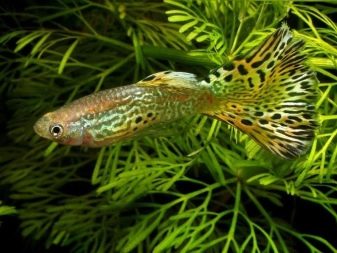
As for nutrition, here the choice is great. Guppy for real omnivores, as they can be fed with special store food, and frozen seafood, and live bloodworms. Experts recommend compiling a diet so that dry granules and cereals make up 70% of the menu, and live and frozen foods are used as an additive to the main food.
It will be useful to occasionally offer fish lettuce or spinach - the plant component in the feed significantly improves the immunity and well-being of pets.
Like other guppies, cobras have a peaceful disposition, so they get along well with most other aquarium inhabitants of a comparable size. But with barbs and other fish, prone to bite other people's fins, cobras are best kept separately.
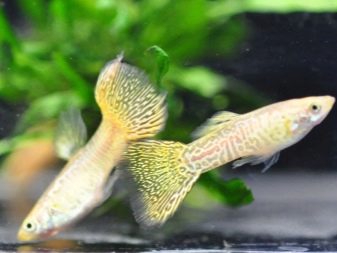
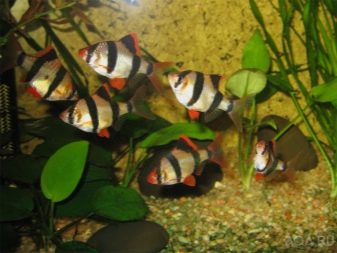
If you do not plan to breed guppies, then only males can be kept in the aquarium - they differ in more saturated colors.
In general, these beautiful, peaceful and unpretentious fish are able to become a decoration of any aquarium and cheer up any of their owners. Looking at these decorative small fishes, it remains only to take off the hat to the breeders, who managed to bring out such an unusual look as guppy cobra.
For an overview of the guppy cobra aquarium, see the next video.
